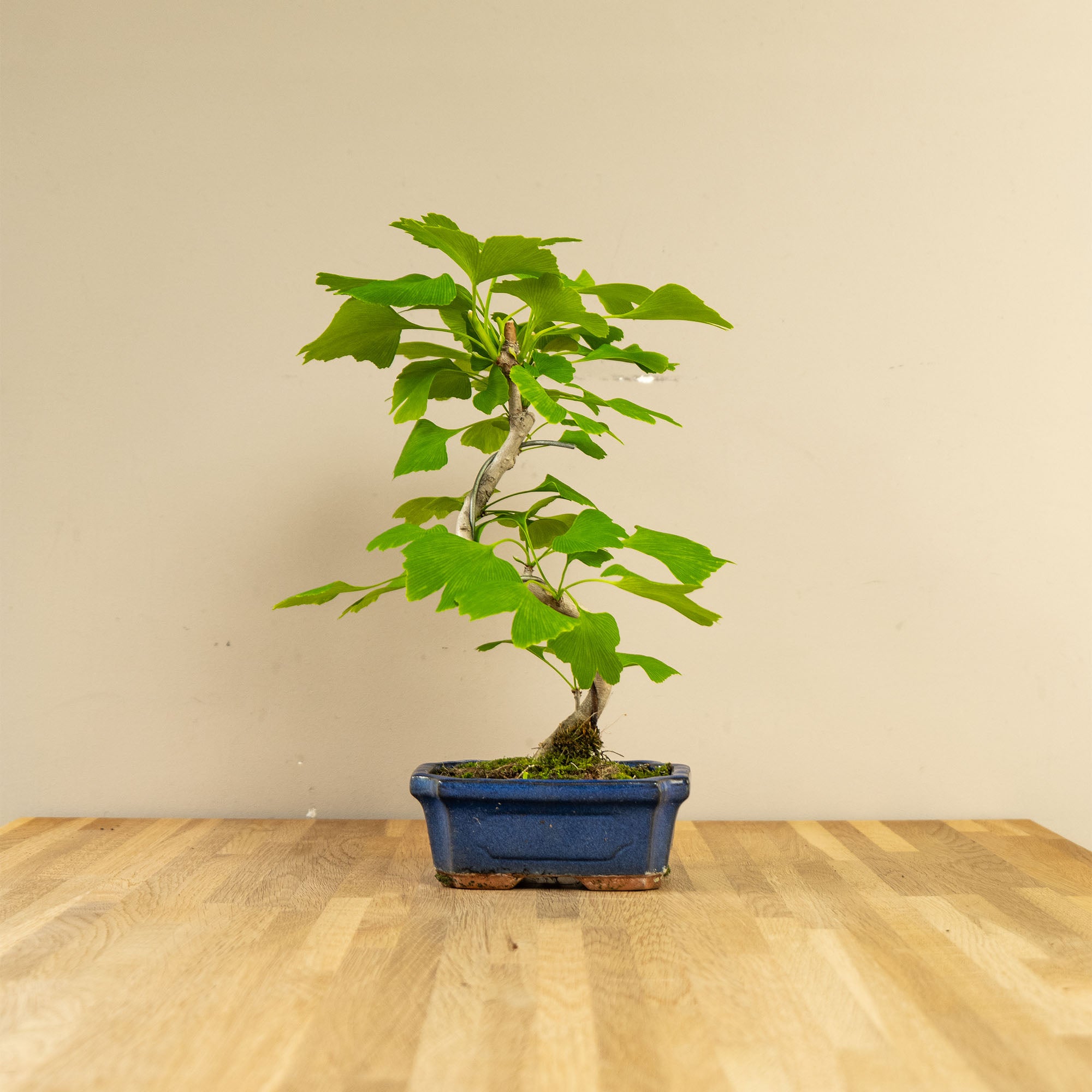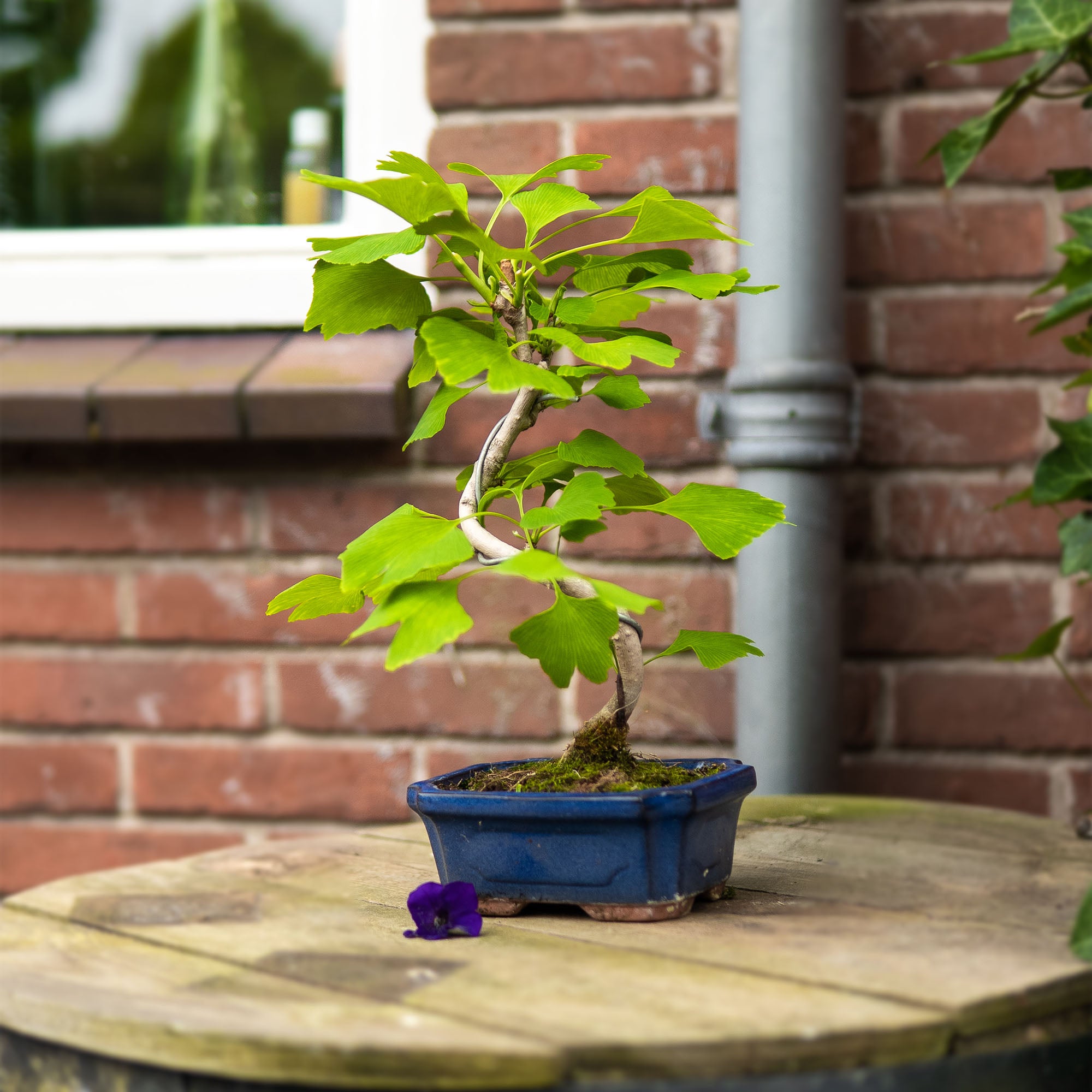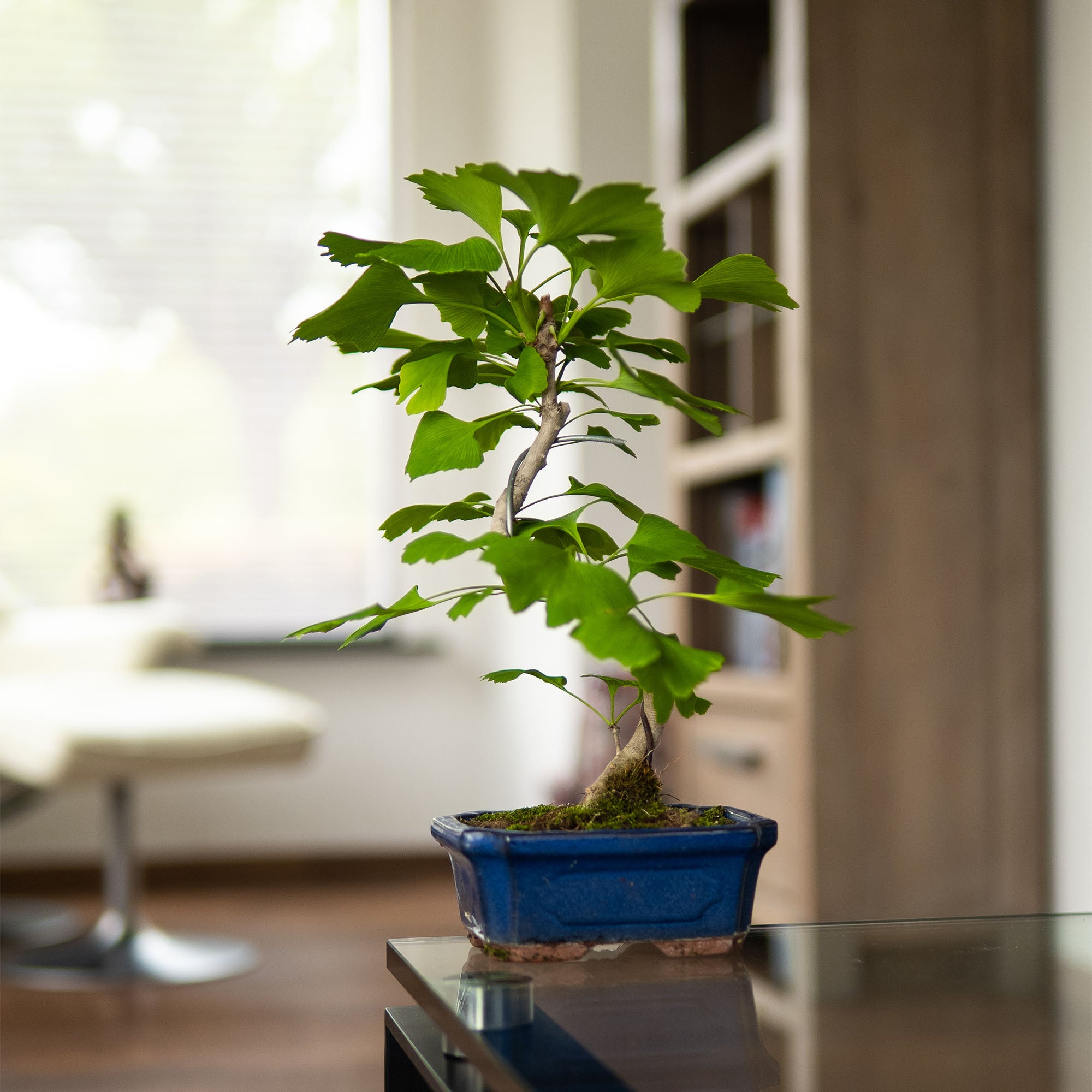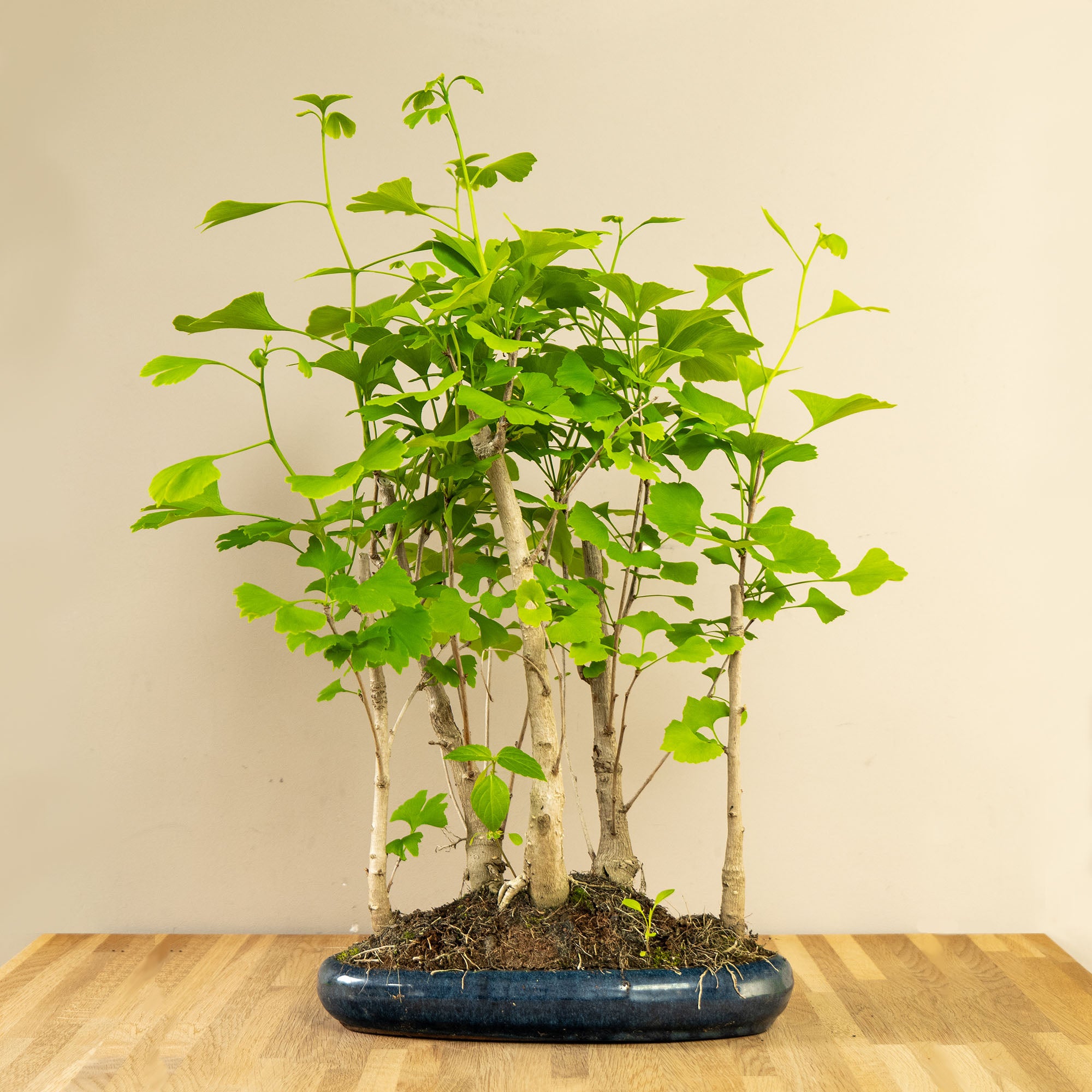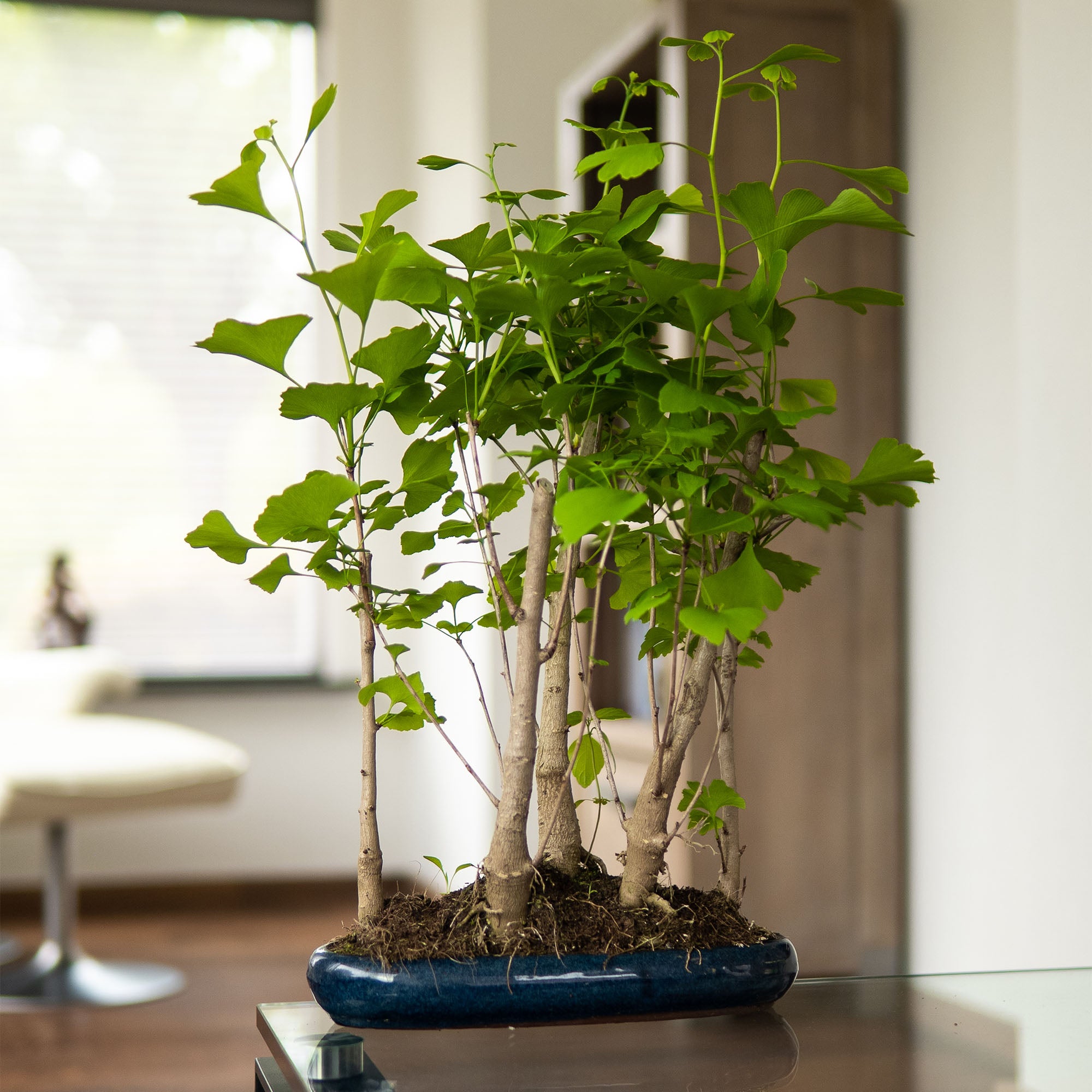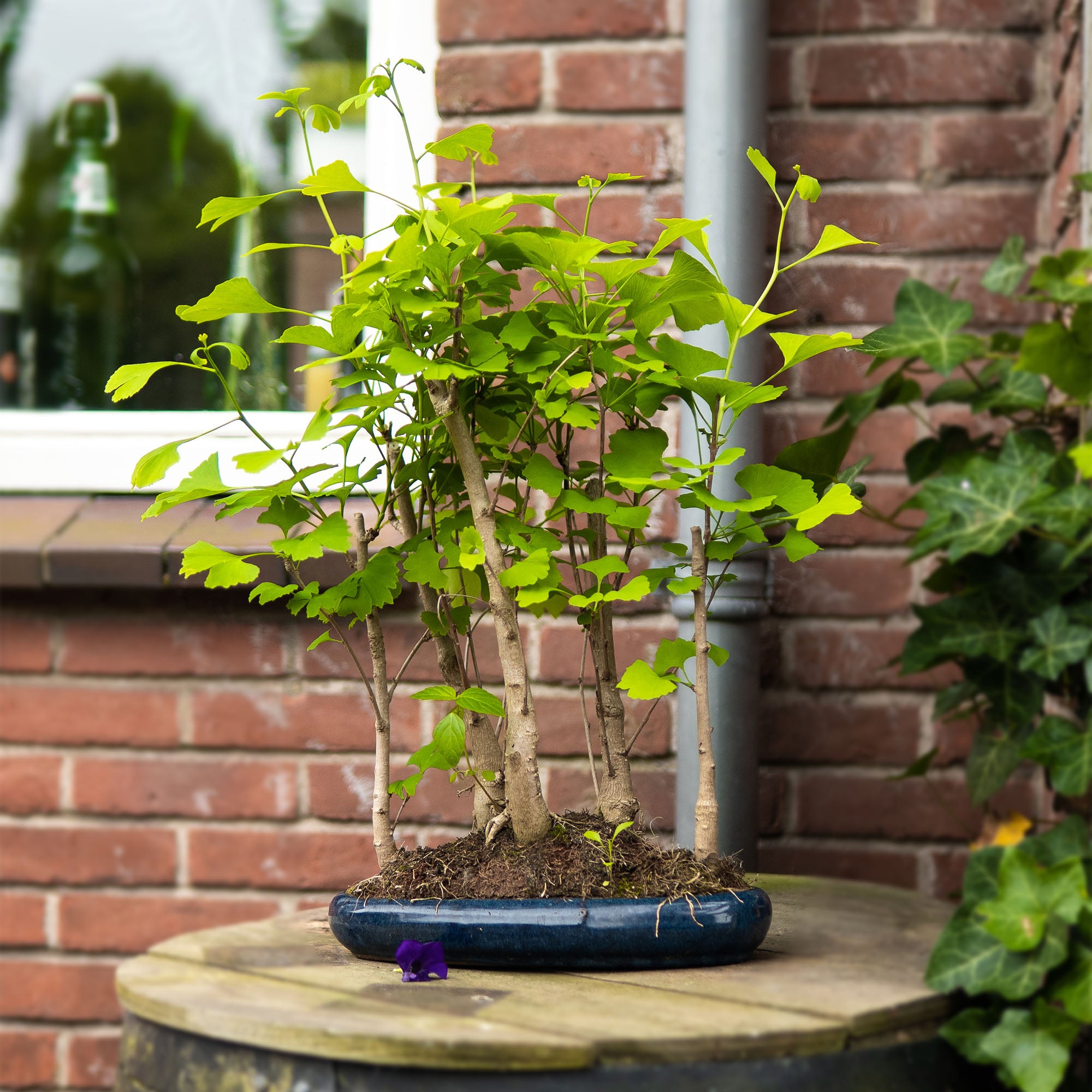Ginkgo (Biloba) Bonsai Care
TheGinkgo Biloba, also known as the Japanese walnut tree, is one of the oldest tree species in the world. Often called a living fossil, this unique tree has been around for over 200 million years, even outlasting dinosaurs. The Ginkgo Biloba originates from China, where it has traditionally been valued for its graceful appearance and medicinal properties.
The tree is easily recognizable by its fan-shaped, bright green leaves, which turn a beautiful golden yellow in the fall. The Ginkgo Biloba is special because of its robustness; it can withstand air pollution, disease and even extreme conditions, such as those after the atomic bomb in Hiroshima, where a few Ginkgos survived.
In medicine, Ginkgo Biloba is known for its leaf extracts, which are often used to promote blood circulation and support memory. As a result, it is often used in supplements for mental clarity and focus.
From an aesthetic point of view, the Ginkgo Biloba is planted in gardens and parks worldwide for its beauty and historical significance. Whether as an ornamental tree or as a source of healing, the Ginkgo Biloba remains a fascinating and versatile plant.
Location
The Ginkgo Biloba bonsai should be outside all year round. A sunny position is optimal, but for younger trees a spot with partial shade is recommended. The ginkgo can tolerate frost well. However, if it is in a bonsai pot, it is important to protect the roots from extreme cold, because the moist, fleshy roots can freeze.
Water gift
The Ginkgo likes a lot of water from spring to autumn, but be careful not to overwater. In winter, keep the root ball only slightly moist.
Power supply
Start fertilizing in the spring when the buds open. Use a high nitrogen fertilizer in the spring so that the tree produces long shoots. Use a liquid fertilizer every week until the leaves turn yellow in the fall. Instead of liquid fertilizer, you can also usesolid organic fertilizerto use.
Pruning and wiring
- Pruning: If a shoot has five or six leaves, you can prune the shoot back to two leaves. Large pruning wounds heal poorly in this species; use wound paste and avoid large pruning wounds if possible.
- Wiring: Ginkgo can be wired all year round. Be careful not to damage the soft bark on the trunk and branches.
Repotting
Young trees can be repotted every year in the spring; older specimens can be repotted every two to five years. Do not prune too many roots at once. Use a well-draining soil mixture. Viewhereour pots
Pests and disease
The Ginkgo is quite resistant and is rarely bothered by insects or diseases.

